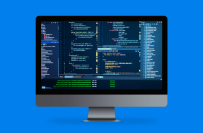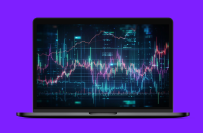
AI-Powered Self-Service Outdoor Kiosk (MVP)
$3000-5000 USD
입찰 중
게시됨 9일 전
$3000-5000 USD
제출할때 지불됩니다
1. Introduction
SOLUTION NEEDED IS MVP
1.1 General Project Description
The project aims to develop advanced software for an AI-powered self-service kiosk designed for outdoor environments. It is optimized for challenging conditions such as ambient noise and direct sunlight. This kiosk enables seamless and personalized customer interaction via voice commands or a touchscreen, ensuring an efficient and optimized shopping experience.
Technologies to be used change with the developer skillset.
Operational Conditions:
Every interaction (proposals, promotions, etc.) must include a Yes/No confirmation message.
Responses must be immediate.
Offline performance is required.
Text descriptions of the BOT's speech should be displayed on-screen.
Clear visualization of UI components.
The shopping cart total must always be visible on-screen.
A navigation bar must always be available.
Key Features:
Fully sealed kiosk with AI technologies to:
Process requests and manage an interactive shopping cart.
Offer personalized recommendations based on user and environmental conditions.
Support multiple payment methods for completing purchases.
1.2 System Objectives
Deliver a fast, personalized, and innovative shopping experience with seamless voice or manual interaction.
Reduce operational costs and maximize efficiency in small spaces.
Ensure continuous offline operation with automatic synchronization when online.
1.3 Special Features
Outdoor Operation: Built for external environments, resistant to external noise, weather, and vandalism.
Hybrid Interaction: Switch between voice and touch interaction.
Voice-Controlled Shopping Cart: Customers can manage their cart (add, remove, or check products) using voice commands.
2. Hardware Requirements
Main Unit:
Processor: Intel i5 or higher (mid-to-high range).
RAM: Minimum 16 GB.
Storage: 256 GB SSD.
Programming Technologies (To be finalized with developers):
Front-End: React, HTML, [login to view URL], Angular.
Back-End: C#, FastAPI.
Database: MySQL, SQLite.
Input Devices:
Palm recognition for payments.
Biometric fingerprint scanner.
3D camera for facial recognition.
Omnidirectional microphone with noise cancellation.
Sunlight and water-resistant touchscreen (IP65 or higher).
Proximity sensor.
Output Devices:
Speakers for synthesized voice output (TTS).
Ticket and receipt printer.
Additional Peripherals:
Barcode and QR code scanner.
NFC reader for card payments.
Palm and facial payment readers.
Wireless credit/debit card reader.
Temperature sensor for contextual recommendations.
3. System Features
3.1 Modules and Services
BOT 1: Welcome & Identification BOT
Purpose: Identifies users through biometrics (face, fingerprint, palm), credentials, or other means. Provides a personalized, empathetic welcome based on user data, such as hobbies and interests, and environmental data like weather or news.
Key Features:
Identify customers via facial recognition.
Provide a personalized and empathetic welcome using TTS and on-screen text.
Contextual updates (e.g., sports scores for fans).
Integration with APIs for weather, local news, and customer databases.
BOT 2: Promotion BOT
Purpose: Gathers cart data, consults the store database for prioritized suppliers or brands, and creates tailored promotions.
Key Features:
Real-time promotions based on cart content.
Pair product offers (e.g., "food + drink" combos).
Sponsored product recommendations.
Interactive promotion pop-ups.
BOT 3: Upselling BOT
Purpose: Suggests additional items based on purchase history, store trends, and impulse-buy products like chocolates or gum.
Key Features:
Personalized upselling using purchase history.
Recommendations for popular items and impulse products.
TTS-based promotions.
3.2 Voice Interaction
Voice Capture & Processing:
Robust speech recognition (e.g., Whisper).
Intent identification via AI (e.g., GPT or similar).
Voice Responses:
Natural voice output (TTS).
Fluid conversations that recall customer data.
Cart Management via Voice:
Commands for adding, querying, and removing items from the cart.
Example: "Add a cola to the cart" or "What’s in my cart?"
Environmental context for suggestions (e.g., cold drinks on hot days).
3.3 Product and Cart Management
Database Integration:
Local database for product availability.
Real-time inventory updates post-purchase.
Advanced Cart Features:
Add, modify, or remove items via voice or touch.
Auto-calculation of totals, taxes, and discounts.
Always display the cart and total on-screen.
3.4 Manual Options
Intuitive touchscreen GUI for product browsing and cart management.
Predictive suggestions in the user interface.
Smooth transition between voice and manual interaction.
3.5 Sales and Payments
Sales Process:
Cart confirmation by the customer.
Digital or printed receipts.
Payment System:
Integration with Transbank for card payments.
Support for QR payments, digital wallets, biometrics (palm, fingerprint, face).
4. Database Model (SQLite/MySQL/PostgreSQL)
Tables include:
customers: Stores customer data (e.g., ID, name, hobbies, biometric data).
products: Details of store products (e.g., ID, description, stock, expiration, price).
sales: Tracks individual product sales linked to a transaction ID.
historical_sales: Summarizes total sales per transaction.
store: Information about the physical store (e.g., location, IP).
promotion: Fixed discounts for products.
campaign: Tracks active campaigns and prioritization for upselling.
5. Scalability and Operation
Offline & Online Modes:
Full offline functionality with automatic synchronization when online.
Local database ensures uninterrupted operation.
Future Integrations:
Additional payment methods.
New product categories (pharmacy, pet supplies).
Advanced recommendations with expanded data.
6. Operational Benefits
Cost Reduction:
Minimizes staffing needs.
Maximizes efficiency in compact spaces.
Technological Innovation:
Enhances customer experience with advanced personalization.
Revenue opportunities through recommendations and ads.
Sales Optimization:
Increases average ticket size via upselling.
Rapid product search and cart management for quick transactions.
프로젝트 ID: 38899188
프로젝트 정보
47 제안서
입찰 가능
원격근무 프로젝트
활동 중 8일 전
입찰하세요
$
USD
프리랜서 입찰의 이점
예산 및 기간 설정
작업 결과에 대한 급여 수급
제안의 개요를 자세히 쓰세요
무료로 프로젝트에 신청하고 입찰할 수 있습니다
47 이 프로젝트에 프리랜서들의 평균 입찰은 $4,253 USD입니다.

5.0
(209 건의 리뷰)
8.1
8.1

5.0
(15 건의 리뷰)
7.2
7.2

5.0
(43 건의 리뷰)
5.3
5.3

4.7
(6 건의 리뷰)
5.8
5.8

5.0
(4 건의 리뷰)
4.9
4.9

4.2
(15 건의 리뷰)
5.9
5.9

4.4
(12 건의 리뷰)
5.7
5.7

5.0
(1 건의 리뷰)
3.5
3.5

5.0
(7 건의 리뷰)
3.4
3.4

5.0
(2 건의 리뷰)
3.1
3.1

5.0
(3 건의 리뷰)
3.1
3.1

5.0
(1 건의 리뷰)
2.0
2.0

5.0
(1 건의 리뷰)
2.0
2.0

0.0
(0 건의 리뷰)
0.0
0.0

0.0
(0 건의 리뷰)
1.0
1.0
고객에 대한 정보

Santiago, Chile
0.0
0
11월 27, 2024부터 회원입니다
고객 확인
유사한 프로젝트
$30-250 USD
$30-250 AUD
$25-50 USD / 시간
$100-400 USD
₹37500-75000 INR
€30-250 EUR
$3000-5000 USD
$30-250 USD
$250-750 USD
$10-30 USD
₹37500-75000 INR
$750-1500 USD
$750-1500 USD
$30-250 USD
$8-15 USD / 시간
$15-25 USD / 시간
₹600-1500 INR
$30-250 USD
$8-15 USD / 시간
$250-750 USD
감사합니다! 무료 크레딧을 신청할 수 있는 링크를 이메일로 보내드렸습니다.
이메일을 보내는 동안 문제가 발생했습니다. 다시 시도해 주세요.
미리 보기 화면을 준비 중...
위치 정보 관련 접근권이 허용되었습니다.
고객님의 로그인 세션이 만료되어, 자동으로 로그아웃 처리가 되었습니다. 다시 로그인하여 주십시오.

























